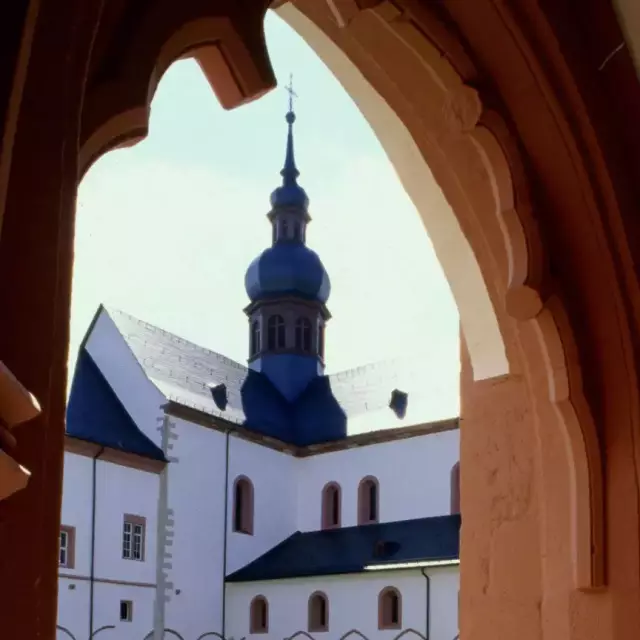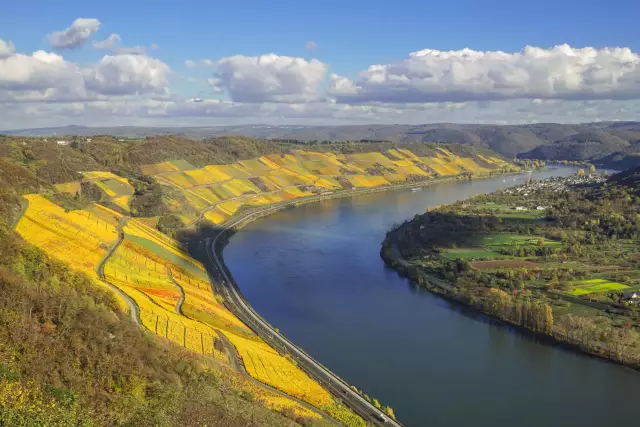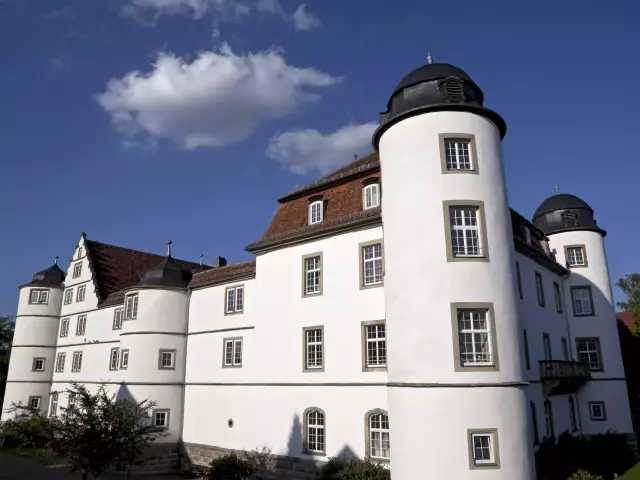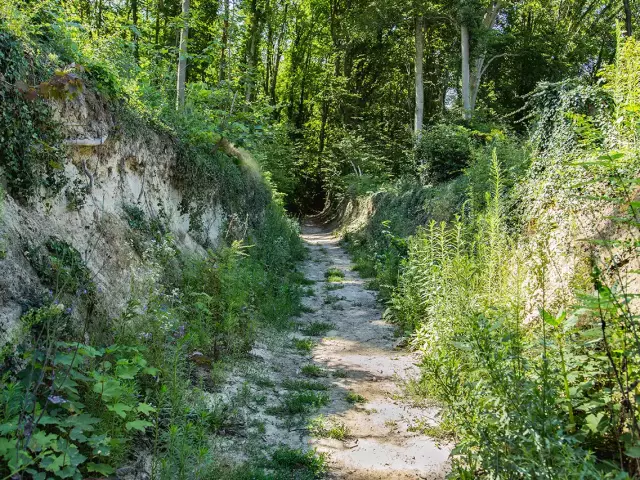The Monastery of Eberbach

This may well be the cradle of viticulture in the Rheingau, since no other building in the area symbolizes centuries of wine making culture like the Monastery of Eberbach near the village of Eltville.
It was 1136 AD when thirteen monks first set foot into this remote Rheingau valley. One year before, the famous Cistercien Abbot Bernard of Clairveaux had visited the Arcadian valley together with Archbishop Adalbert from Mainz, when right before their eyes, a boar jumped out of a hedge and over the brook. Whether this is really the origin of Eberbach's name – meaning the boar's brook – can not be confirmed by historic sources, however, the monks had just journeyed from Clairveaux in the Burgundy region of France, to found a new monastery in the Rheingau valley through which the Kisselbach runs – and they had brought grapevines with them.
The Monastery of Eberbach soon grew to be one of the biggest and most important cloisters in Germany, also thanks to its wine. The grape variety Pinot Noir, imported from Burgundy, became the first successful wine export from the Rheingau: the monks were exempt from toll charges along the Rhine, thus they ran a very profitable business dominating the wine trade all the way down the river to Cologne. In 1162, the Monastery even owned a storehouse in Cologne, privileged by Pope Alexander III.
Towards the end of the 15th century, rooms of the monastery like the Fraternei (Brothers' Hall) and the refectory for the lay priests were also turned into wine cellars – at this time, up to 150 priest monks and 600 lay priests lived in the monastery. The wars of the following centuries damaged the monastery to a large extent, however viticulture continued to flourish. In 1730, the monks built a treasure chamber for their most valuable wines – we know the date from a bill written by a carpenter from Eltville concerning the "Kabinett cellar." Still today, priceless treasured wine from centuries long gone, are stocked here in the vaulted cellar.
Monastery life in Eberbach ended with Secularisation in 1803, yet the tradition of wine growing was continued by the new worldly owners. First this was the Duke of Nassau, then from 1866, by the Prussians and finally, since 1945, by the State of Hessen. Today, the Hessian State Wineries administer six Domains, five of them situated in the Rheingau and one on the Hessische Bergstraße. With 200 hectares of vineyards, it is the biggest wine growing company in Germany. The red wines from Kloster Eberbach estate, however, remain a trade mark in themselves – Pinot Noir is still grown here on 32 hectares.
In summer 2008, only several hundred meters down the road from the old monastery, the Steinbergkeller was opened, a state-of-the-art wine production site rivalling any in Europe. Each day, up to 7000 litres of grape juice can be processed, while the cellars stretch out for 5000 square metres and on several levels underground. They reach all the way below the Steinberg, the oldest vineyard site in Eberbach, its very first and purportedly producing the favorite wine of the monks. The Steinberg vineyard is enclosed by a 3000 metre medieval wall of quarry stones, which provides a special climate for the Riesling grapes growing on the slope. The results of today's vinification can be tasted in the monastery's wine shop – or at one of the frequent wine tastings.




